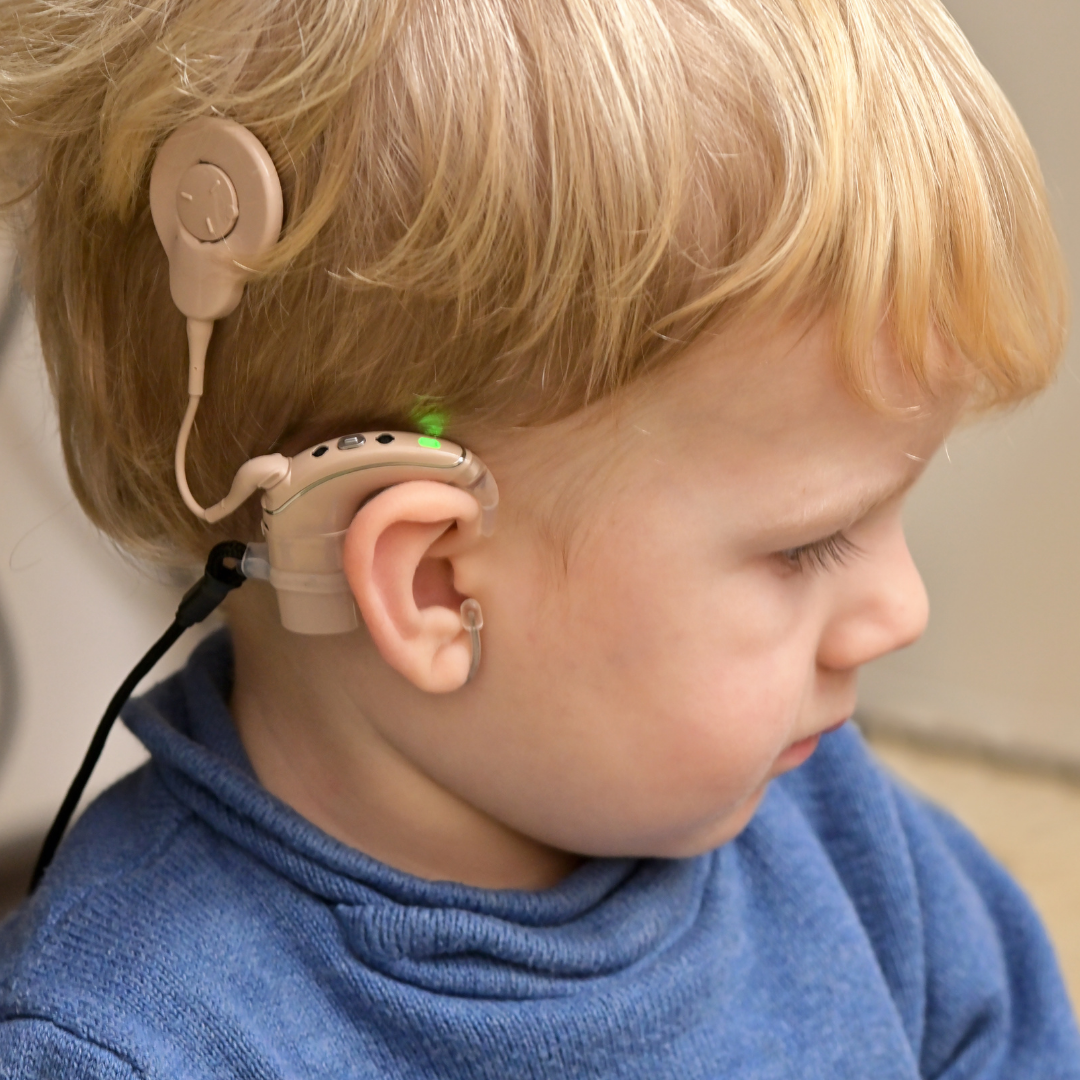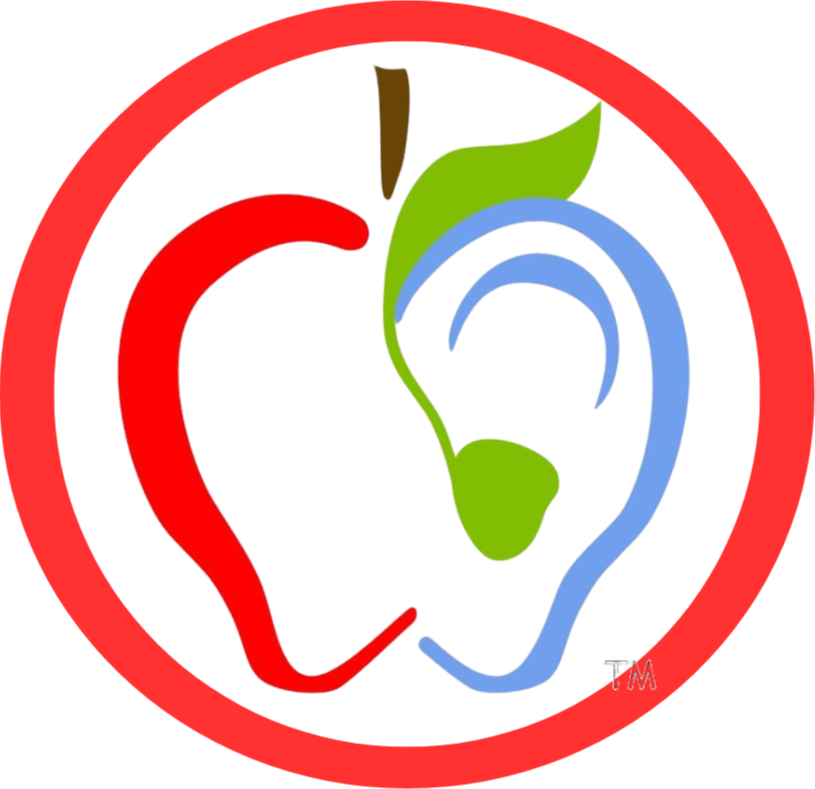Impact of Unilateral Hearing Loss in the Classroom
Jan 12, 2023
Having unilateral hearing loss (UHL) as a child can be quite challenging. Especially in a classroom where UHL students might be grouped together with the students who have normal hearing. Unilateral hearing loss is used to indicate ALL children who have hearing loss in one ear, and specifically for those with any residual hearing. Even though they don't have normal hearing, they aren't completely deaf and may be grouped with kids who hear and communicate normally. In the classroom, this can impact how well they receive information and how they are able to communicate with the teachers and other students. In this blog, we will discuss how UHL affects children’s language development and some potential solutions!
Impact of UHL on Language and School Performance

Below we will discuss some statistics comparing UHL students with normal hearing students so we can see how it impacts learning and development in the classroom. Why are these numbers important? It can give teachers realistic expectations as well as the proper information to prepare for having students with UHL in their classroom. Instead of assuming that they will be able to hear simply because they have partial hearing can inherently set that student up for failure. And that’s the last thing that we want! We want to give every child the opportunity to succeed in a classroom setting.
By understanding these statistics, we can have a better appreciation of how students with UHL are impacted in the classroom of predominantly normal-hearing students. Let's take a closer look at the types of delays that one might expect in a student with UHL.
Research shows that children with UHL may experience delays in their first two-word phrases. Infants with UHL may be eighteen months old before they can say a two-word phrase, compared to fifteen months for infants with normal hearing. Twenty-one percent of children with UHL experienced delays in auditory behavior versus four percent of children with normal hearing.
Other delays, statistics, and risk factors include:
- Delay in preverbal vocalizations: delays in 41% of children with UHL versus only 2.6% of normal hearing children.
- On average, there are language delays of 6 months for children with UHL.
- Lower scores on syntax, morphology, vocabulary, and oral language skills for children with single-sided deafness (SSD).
- Risk factors include lower IQ, poverty, maternal education, and there is a higher chance of language delays in those who are male.
Looking at these numbers doesn't have to be discouraging! It just means that we, as educators, should consider how we teach our students who have UHL. This is not to say that every student with UHL will have these delays. In fact, children with higher IQ (90+) typically have higher oral skills. Their oral skills greatly improved over time from ages 6 to 12 years. Children with lower IQ (90 or less) did not improve or improved at a much slower rate in their oral skills over time. Lower IQ UHL students who were on Individualized Education Programs (IEPs) had oral skills that improved over time whereas those who were not on IEPs decreased in their oral skills relative to age peers over time.

This is why IEPs are crucial for early development in children with partial hearing loss. IEPs as we have discussed in previous blogs consist of a team of experts in their respective fields who help the child with hearing loss and parents adjust to social situations inside and outside of the classroom. They develop plans for the child that include the teacher, parents, administrators, and experts to help the child succeed in a typical classroom setting as well as work with the child individually so they can be properly equipped to handle situations on their own eventually.
What are the educational risk factors?
Children with UHL also have an increased risk of grade failure, a higher probability that they will be on IEPs, increased academic weaknesses, and higher rate of speech therapy (~50%). With these risk factors, language delays in infancy through adolescence and verbal IQ differences may widen with age and as a result, may not disappear.
Amplification Findings for UHL
Younger children from ages six to nine, who received their first hearing aid by age five, showed benefit in sound localization when using the hearing aid in their poor ear. This is only for children with UHL, not SSD. Older children from ages ten to fourteen, who received an aid at age seven or older, indicated that the hearing aid was detrimental to localization. This shows the importance of early intervention. Providing early ‘balanced’ hearing to children with usable hearing in the poor ear prior to age three provides the best results. Early intervention success was linked to bilateral ‘balanced’ hearing. The longer the child waits to get a hearing aid, the lower the chance of success for balanced hearing.
After a retrospective parent survey, 72% of parents felt their child improved or greatly improved using a hearing aid in the poorer ear in various listening situations. Research found that 100% were happy they chose to have their child fit with a hearing aid. 50% expressed that they wished a hearing aid were fit sooner. Based on 337 children, only 21% received amplification shortly after diagnosis. Most of the time, it takes a year or more for children to get fitted for their first hearing device. On average, the age of diagnosis is 13.9 months and the age of amplification is 42.9 months. Of those who received hearing aids, 37% of children with UHL did not use them.
So what can be done to improve their odds in the classroom?
For children with UHL, there is the option of a Contralateral Routing of Signal (CROS) hearing aid, which helps people with UHL or SSD. It is worn on both ears. On the affected ear, it has a device which will pick up sound and on the normal hearing ear, there is a device to receive that sound. The normal hearing ear will both hear the sound naturally without amplification, as well as through the CROS hearing aid.
Can CROS aids improve speech recognition and comprehension in the classroom?
Previous work has suggested that FM systems are the best option for students with UHL. However, recent research indicated that the benefit of a CROS hearing device relative to FM is most notable in multi-talker situations with peers who are not using the remote FM microphone. Benefits were most apparent for speech from the affected ear. This means that for classroom situations, where multiple students may be talking at the same time, the CROS hearing device tends to perform better at picking up and deciphering the sounds coming from the side of the affected ear.
What about cochlear implants?

There has been an improvement for students with SSD and cochlear implants. The most improvement in speech understanding is in the first three months after implant activation. Words and sentence scores prior to implantation are about 5% correct. After three months, they are 35 and 55%. After six months, they are 40 and 60%, and twelve months post-activation scores are 45 and 65%. Cochlear implants for SSD can improve speech understanding but may have a negligible impact on listening effort.
Advocacy

Children with UHL need opportunities with UHL peers so they can share their experiences and feel accepted.
What we know and don’t know about children with UHL:
- They represent 20-25% of all children with diagnosed permanent hearing loss.
- They struggle to perform like their hearing peers.
- They tend to be fitted earlier with amplification.
- But the use of amplification is a big challenge.
- We don’t know the impact on amplification to prevent language delay or auditory skills.
- We need long-term studies on early identified children with UHL.
The system isn’t perfect. There are limited options to provide for students with UHL, but what we can do is express compassion and patience. The best way for them to succeed is for them to bond with other UHL students of the same age. With this opportunity, they can feel included, understood, and more motivated to succeed. While they still need experiences with their hearing peers, having a feeling of community is of the utmost importance for their development.
Stay tuned for more from the Online Itinerant!
Source
Unilateral Hearing Loss in Children: Impact and Solutions by Dane Bowers, AuD, CCC-A

